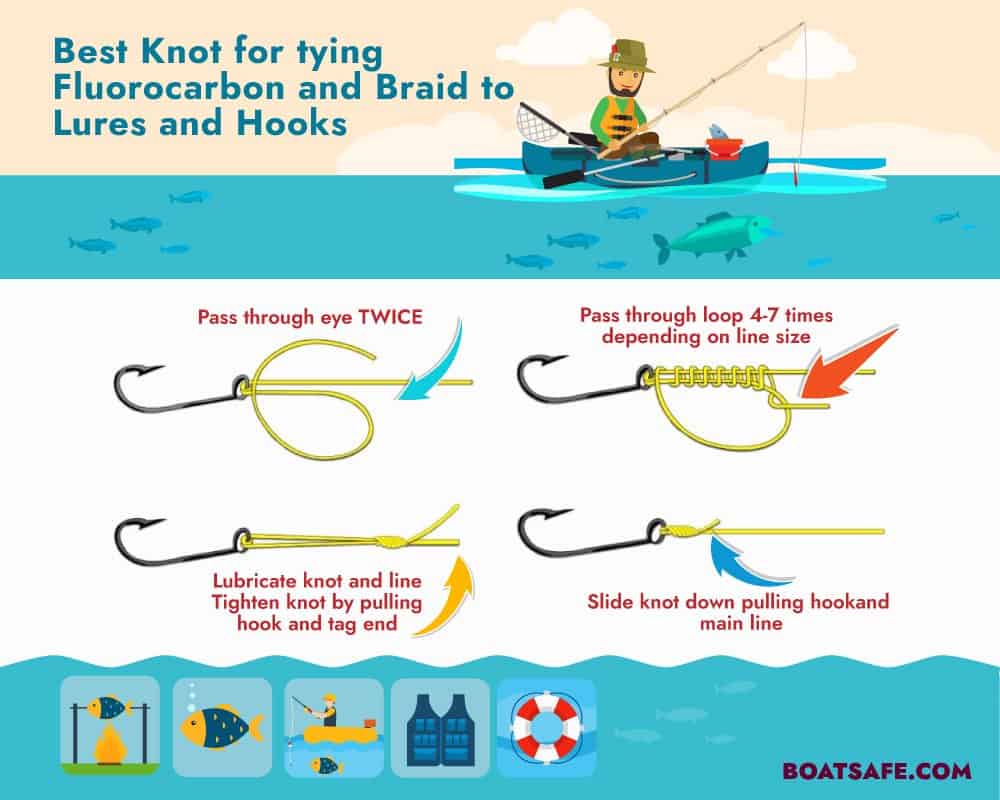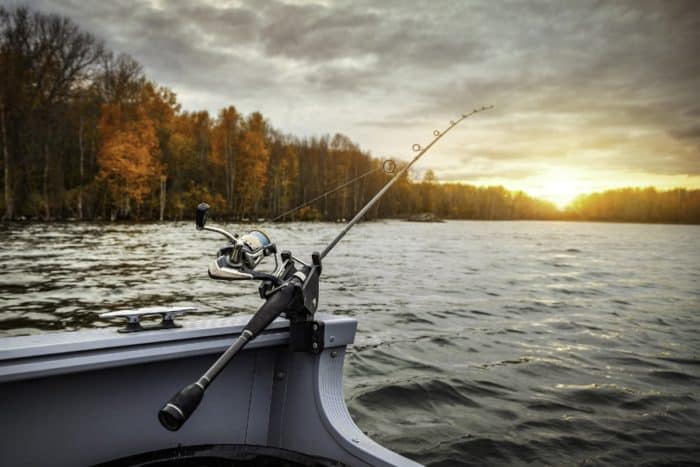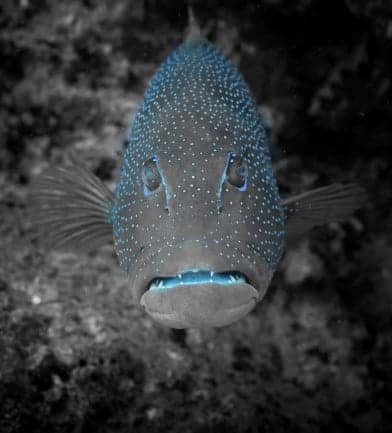Best Fishing Knots That You Can’t Live Without
If you’ve ever tied a hook onto your fishing line and noticed that it came undone quickly or broke easily, you’re not alone.
Tying a fishing line is a little more intricate than just tying a knot on a string. Because fishing line is made of nylon, it doesn’t tie the way normal cloth thread ties. This causes it to unravel easily if it is tied in just a basic simple knot.
The type of knot you tie on the fishing line can significantly improve your success on the water.
Different Knots for Different Types of Line
Fishing line is classified into one of two categories: monofilament/fluorocarbon or braided.
Monofilament and fluorocarbon fishing line is a single strand of material that makes up the fishing line. The difference between monofilament and fluorocarbon is the visibility.
Fluorocarbon is very see-through and can’t be easily seen in the water, whereas monofilament line is a little denser and not as transparent.
Braided fishing line has more than one strand of material that makes up the fishing line. This causes the line to be thicker both visibly and in diameter.
It’s only logical to assume that monofilament and fluorocarbon line ties differently than a braided line, and that would be a true assumption to make.
Knots are Used for More than Just Tying a Hook
If you are using a filler line on your reel, you will need to tie the two lines together. This requires knowing the best knot to tie so that the two lines stay connected and don’t come apart or unravel.
If you are using a leader line, you will need to tie your main line securely to your filler line so that it doesn’t detach as soon as you hook a fish. After all, the leader line you are using is intended to be strong enough to withstand impacts and tension, so it is only as good as the main line it is attached to. It won’t do you any good if it detaches from the main line because of a weak knot.
The Best Fishing Knots
Since there are different scenarios in which you will be tying a knot on your fishing line, we will break these down into categories for you to easily jump to the category you need for the type of knot you are tying.
We will cover the best line-to-line fishing knots, the best line-to-leader fishing knots, and the best line-to-hook fishing knots.
Because fishing line is classified as monofilament or braided, we will separate the different types of knots you can tie between two types of fishing lines so that you can easily find the best fishing knot for the application you need.
The Best Monofilament to Monofilament Knots
Filler line is fishing line that is spooled onto the reel first before the main fishing line that you will be using. Filler line is often an inexpensive monofilament line that needs to simply help fill the spool so that the spool on the reel is full.
1. Surgeon’s Knot
The surgeon’s knot is an easy knot to tie between lines that have both equal and differing diameters. It can be tied quickly without much thought or effort, which is what makes it one of the best knots to tie between two monofilament lines.
A triple surgeon’s knot is when you do three wraps through the loop of the knot. This makes the knot more secure, but it also creates a bulkier knot.
2. Blood Knot
If you are tying two lines together that have an equal diameter, you can use a blood knot. A blood knot is made by taking the two ends of the line and wrapping them around one another at least five times and then back through the center loop. This secures both the together lines by making a tight knot in the middle that has reinforced wraps on each side of the knot.
3. Double Uni Knot
The double uni knot can be used to tie two monofilament lines together in a quick and easy method. This knot is often preferred by both saltwater and freshwater fisherman because it is a quick, easy, and reliable knot to tie when joining two monofilament lines.
The Best Monofilament/Fluorocarbon to Braided Knots
Fluorocarbon line is extremely transparent and almost considered invisible in the water. Braided line is thick and can easily be seen in the water, so many anglers tie braided line to fluorocarbon line so that the line in the water is invisible but reinforced by a stronger braided line.
1. Double Uni Knot
The double uni knot is the overall best knot to tie when connecting monofilament or fluorocarbon to braided line. The knot is successful because the lines can be different diameters and still produce a secure knot.
2. FG Knot
The FG stands for fine grip because of how secure the knot is. The FG knot is created when the loop of one line intersects with the other line to create a knot. Then, the line is wrapped around one another to create the remainder of the knot. The FG knot is a relatively long knot because of the many twists that are made around the lines once they are connected.
3. Bristol Knot
To tie a Bristol knot, you will need to tie a bimini twist on the main line of the reel. This is what you will use to tie the knot and attach the other line. Once the Bimini twist is made, the other line will go through the loop of the bimini twist and twist around both lines that make the loop. You will then pull the line back through the loop and pull both lines so that they tighten the Bristol knot in the middle.
The Best Monofilament/Fluorocarbon to Hook/Swivel/Lure Knots
Whether you are using a hook, a swivel, or a lure, you will need to tie a strong and secure knot that will keep the gear attached to the line.
Tying a hook, lure, or swivel to a line can be done using a loop knot or a snug knot. We will go over both types of knots and when you should use each one.
These are the best knots for tying monofilament or fluorocarbon line to hooks, swivels, and lures.
Loop Knots
Loop knots are often preferred by anglers who want their bait or lure to move as much as possible in the water. Because the lure, hook, or swivel is connected to the fishing line by a loop, it moves more freely with a wider range of motion than if it was tied with a snug knot. This makes loop knots more appealing to those anglers who want their bait or lure to move as much as possible.
1. Rapala Loop Knot (Best for Lures)
The Rapala loop knot is at the top of the list for its reliability and functionality when tied to a lure.
The Rapala loop is great to use when tying the line to a lure because it creates a more natural movement for the lure it is attached to. It is a loop knot that is tied and secured around itself as it holds the lure in place on the loop it has created.
2. Figure 8 Loop Knot (Great for Hooks/Swivels)
The figure 8 loop knot is a great knot to use when tying line to hooks or swivels because of how strong it is. It is slightly more difficult and slower to tie, but the strength it produces makes it great for hooks and swivels.
3. Non-Slip Loop Knot (Best Overall)
The non-slip loop knot is considered to be an easier and quicker knot to tie than the Rapala loop knot, which makes it great for lures, swivels, and hooks. It’s a simple knot that has strength and doesn’t get too fat or too long.
Snug Knots
Snug knots are knots that directly touch the lure, swivel, or hook. When a snug knot is tied, it is secured snugly to the object it is being tied to. Unlike a loop knot that allows the bait to float more freely, a snug knot is connected directly to the lure or hook, making it more stationary in the water.
1. Palomar Knot
The Palomar knot tried-and-true, which is why it is first on our list. Anglers love the Palomar knot because it is tight, strong, and quick and easy to tie. When you need to tie a new hook, swivel, or lure to your line, a Palomar knot is one of the fastest and most reliable knots you can use.
2. Uni Knot
The uni knot is one of the best fishing knots you can choose when you want to tie your line snugly to the lure, hook, or swivel. It is a simple knot that gets its name from the one simple pass-through the line makes when securing the knot. The line goes through the hook or lure and is wrapped around itself six times before passing through the circle of the line to make the knot.
3. Orvis Knot
If you like the Palomar knot, then the Orvis knot will be your next choice. The Orvis knot is tied completely different than the Palomar knot, but the strength of the knot combined with how quick and easy the knot is to create makes it one of the best.
The Best Braided Line Knots
Fishermen of all experience levels will likely have braided line in their tackle box to use in those situations where they need a little extra strength and durability. And when you want to tie braided line to a lure or a leader line, you will need to know the best fishing knot to use.
The Best Braided Line to Leader Knots
Sometimes you need your braided line to be attached to a leader line. To do this, you will need to know how to tie the braided line to the leader line so that it doesn’t come unraveled or detached.
1. FG Knot
The FG knot is the best to use when tying braided line to leader line. The FG knot creates such a long, tight knot that it is extremely difficult to break or come undone. This is perfect for braided line that is being tied to leader line.
2. Double Uni Knot
Another great knot to tie when connecting two lines together is the double uni knot. It is incredibly easy to tie and creates a tight knot that will keep both lines connected to each other once tied.
3. Yucatan Knot
The Yucatan knot is arguably the strongest braid-to-leader line knot you can make. It is often compared to the Allbright knot, with the main difference being the double lines that are wrapped around the single line. This is what makes the Yucatan knot stronger than most.
The Best Braided Line to Hook/Swivel/Lure Knot
When tying your braided line to a hook, swivel, or lure, you will need to make sure the knot is tied correctly. Tying braided line incorrectly to a hook, swivel, or lure can easily cause the gear to fall off of the line.
Because braided line is thicker, it is also more easily seen in the water, so tying it directly to the lure, swivel, or hook may deter fish from checking out your bait. Keep this in mind when you are thinking of tying braided line directly to a hook, swivel, or lure.
1. Braid Uni Knot
The braid uni knot is just like tying the uni knot, except you will add two additional wraps to the knot when tying it. This is what makes it so successful and so strong for braided line.
2. Palomar Knot
Here we are again with the Palomar knot, but that’s because it is such a successful knot to tie. Tying a Palomar knot with braided fishing line is no different than with monofilament or fluorocarbon. The only difference is that braided line makes the knot slightly weaker than when using monofilament or fluorocarbon.
3. Orvis Knot
Just like for monofilament or fluorocarbon line, the Orvis knot is a great choice for braided line because of its strength and simplicity. And just like the Palomar knot, it is not as strong when using braided line.
Conclusion
We hope this has helped you understand the difference in when to use the best fishing knot for the right fishing line and the right application. Keeping your lines tied together and your lures, hooks, or swivels tied to your line can mean the difference in bagging a monster fish or having just another story to tell.
Categories: Fishing












